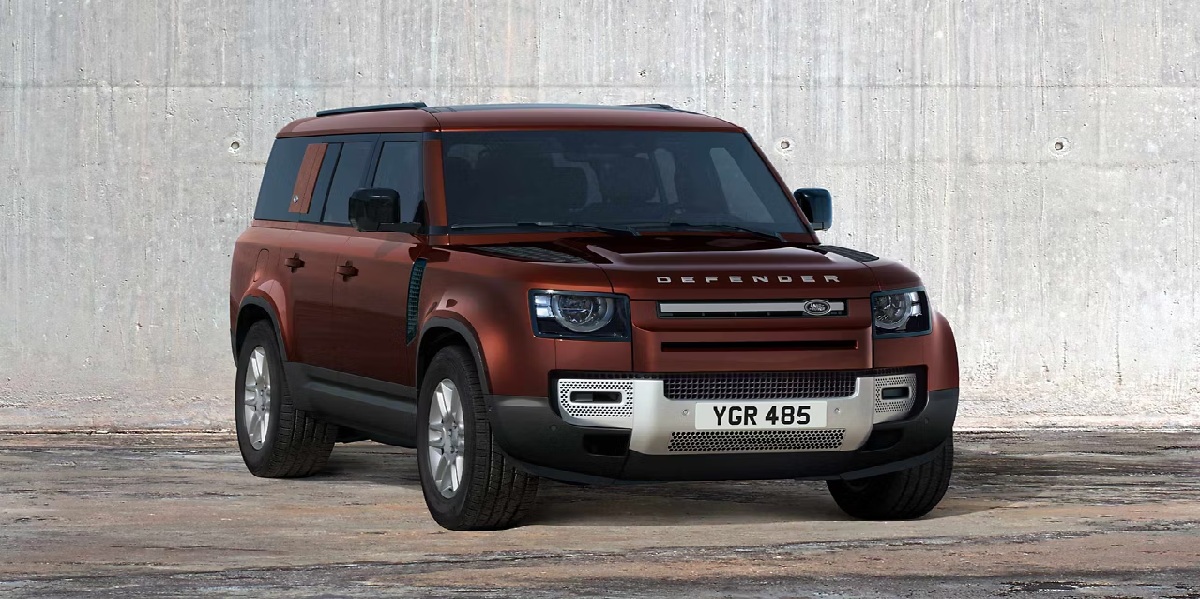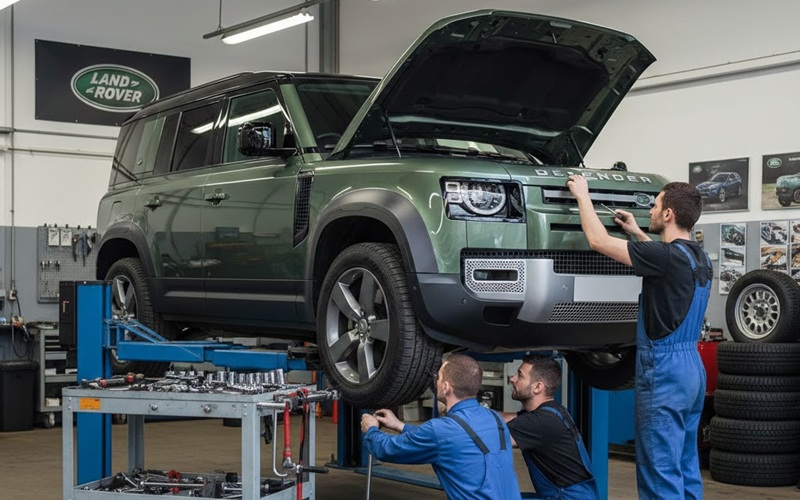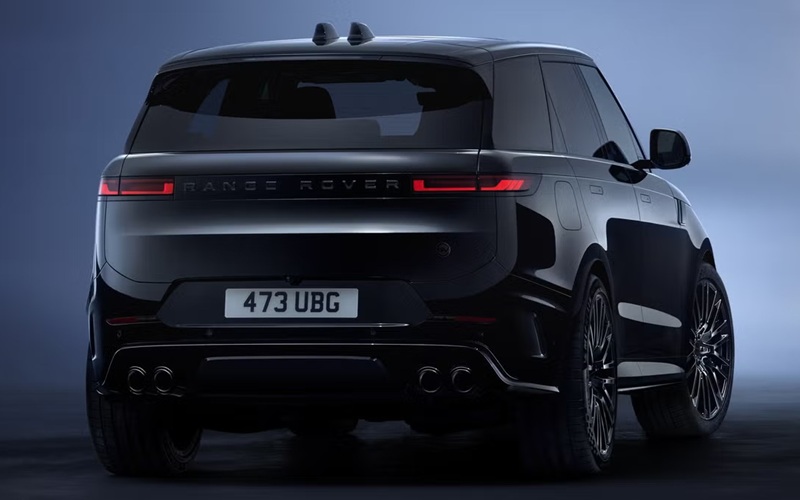What are wheel arch flares on the Land Rover Defender?
Wheel arch flares are distinctive body components that surround the wheel wells of the Land Rover Defender, extending outward from the vehicle’s body. On the modern L663 Defender (introduced in 2020), these components come in various designs and finishes, serving both aesthetic and functional purposes. While the base models feature textured unpainted plastic arches, higher trim levels and special editions offer painted or gloss black finishes that integrate seamlessly with the vehicle’s overall design language. These components are not merely decorative; they provide crucial protection for the bodywork while enhancing the already commanding presence of the Defender on and off the road.

What types of wheel arch flares are available for the Defender?
The Land Rover Defender offers two primary styles of wheel arch flares: standard and extended. The standard wheel arch flares maintain the vehicle’s original silhouette while providing the necessary coverage for the wheels and tires. They follow the natural contour of the body without significantly altering the vehicle’s width. In contrast, extended wheel arch flares protrude further from the body, creating a more aggressive stance and providing additional coverage for wider wheels or larger tires. These extended flares are particularly popular among off-road enthusiasts who modify their vehicles with oversized tires or wider track widths. Both styles are available for all three Defender body configurations: 90 (short wheelbase), 110 (medium wheelbase), and 130 (long wheelbase).
How do wheel arch flares enhance the Defender capability?
Beyond their visual impact, wheel arch flares serve critical functional purposes for the off-road-focused Defender. They provide essential protection against debris, mud, and rocks that might otherwise damage the vehicle’s bodywork during challenging off-road excursions. When traversing rough terrain, tires can kick up various materials that could chip paint or dent body panels—the flares act as the first line of defense against such hazards. Additionally, extended wheel arch flares allow for the installation of wider tires or wheels with different offset measurements without violating regulations regarding tire coverage. Many jurisdictions require that tires remain covered by bodywork to prevent excessive spray and debris from being thrown onto other vehicles, and properly sized wheel arch flares ensure compliance with these requirements while maximizing off-road capability.
What materials and finishes does Land Rover use for Defender wheel arch flares?
Land Rover manufactures Defender wheel arch flares primarily from high-density polyethylene (HDPE) or acrylonitrile butadiene styrene (ABS) plastic, materials chosen for their exceptional durability, impact resistance, and ability to withstand extreme temperature variations. The factory offers several finish options for these components. Base models typically feature textured, unpainted plastic with a matte black appearance that hides minor scratches and scuffs effectively—ideal for vehicles frequently used in challenging off-road environments. Higher trim levels and optional appearance packages offer colour-matched painted flares that blend seamlessly with the body colour, or gloss black finishes that create a striking contrast against lighter vehicle colours. The gloss black option has become particularly popular as part of the “Black Pack” exterior appearance package, creating a cohesive look with other darkened exterior elements like grilles, badges, and trim pieces.
How are wheel arch flares integrated into Defender design packages?
Land Rover has thoughtfully incorporated wheel arch flares into various design packages that enhance the Defender versatility and visual appeal. The Extended Black Package includes gloss black wheel arch flares that complement other darkened exterior elements for a more aggressive, contemporary appearance. The Extended Bright Package pairs Ceres Silver painted wheel arch moldings with Noble Chrome accents elsewhere on the vehicle, creating an upscale, refined aesthetic. For those seeking a more heritage-inspired look, the County Exterior Package incorporates colour-coordinated wheel arch flares that match the contrast roof and graphic decals, paying homage to classic Defender special editions. Additionally, various expedition-focused accessory packages include wheel arch flares that coordinate with other off-road enhancements like rock sliders, expedition roof racks, and protective underbody panels. This systematic approach to vehicle personalization allows owners to create a Defender that precisely matches their aesthetic preferences and intended use cases.
How does installation and maintenance work for wheel arch flares?
Factory-installed wheel arch flares on the Defender use specialized clips and fasteners that secure them firmly and withstand the vibration and flex of off-road driving. For those upgrading from standard to extended flares or changing finishes, installation can typically be done by authorized Land Rover service centers or experienced aftermarket specialists. The procedure involves carefully removing the existing flares without damaging the underlying paint or body structure, then installing the new components using either the original mounting points or additional hardware if required. Maintenance stays simple—wash the vehicle regularly with mild automotive soap in most situations, and occasionally wax painted or gloss finishes to maintain their appearance. For vehicles driven in extreme off-road conditions, inspect the mounting points periodically to ensure all fasteners stay secure, since loose wheel arch flares can cause wind noise and let water and debris reach vulnerable body areas.
What design considerations influence wheel arch flare selection?
Selecting the appropriate wheel arch flares involves balancing aesthetic preferences with practical considerations. The standard flares offer a cleaner, more streamlined appearance that many urban Defender owners prefer, maintaining the vehicle’s width for easier navigation in tight spaces like parking garages and narrow city streets. Extended flares create a more commanding presence and allow for wider wheel and tire combinations, but may make the vehicle more challenging to maneuver in confined areas. Colour selection also plays a crucial role—gloss black flares create a sporty, modern look, especially when paired with contrasting body colours like Pangea Green or Gondwana Stone. Colour-matched flares create a more cohesive, monochromatic appearance that some owners prefer for a sophisticated aesthetic. Additionally, wheel arch flare selection often complements other design choices, such as wheel finish, roof colour and exterior trim accents, allowing owners to create a personalized Defender that reflects their style while maintaining the vehicle’s iconic design language.
How do wheel arch flares impact aerodynamics and efficiency?
Although designers primarily create wheel arch flares for protection and aesthetics, they also shape them to influence the Defender aerodynamics. They integrate the standard flares into the body design to reduce airflow disruption and maintain as much aerodynamic efficiency as possible within the vehicle’s boxy, utilitarian shape. Extended wheel arch flares, however, can create additional aerodynamic drag by increasing the vehicle’s frontal area and disrupting smooth airflow around the wheel wells. This increased drag may result in slightly reduced fuel efficiency and potentially more wind noise at highway speeds. Land Rover engineers have mitigated these effects through careful design, incorporating subtle contours and transitions that help manage airflow. For most daily driving scenarios, the impact is minimal, but owners who frequently travel long distances at highway speeds might notice a slight reduction in fuel economy with extended flares compared to the standard configuration. This trade-off is generally accepted as worthwhile for the enhanced capability and distinctive appearance that extended wheel arch flares provide.
5 Facts About Land Rover Defender Wheel Arch Flares
- Design Evolution: The modern Defender wheel arch flares were inspired by the aftermarket modifications commonly made to classic Defenders, particularly the North American Specification (NAS) models that featured wider flares to accommodate larger tires required by enthusiasts.
- Material Innovation: Unlike the classic Defender metal wheel arches that were prone to rust, the L663 Defender uses advanced polymer composites in its wheel arch flares that can withstand impacts at temperatures ranging from -40°C to +70°C without cracking or deforming.
- Hidden Functionality: The mounting system for Defender wheel arch flares includes carefully designed water channels that direct moisture away from vulnerable body seams, reducing the potential for corrosion in critical structural areas.
- Colour Matching Complexity: Land Rover uses a specialized painting process for body-colored wheel arch flares that requires a slightly different formulation than the main body panels to account for the different substrate material and flex characteristics of the plastic components.
- Heritage Connection: The extended wheel arch flare option pays homage to the limited edition Defender 90 and 110 “Adventure” models from 2015, which featured similar wide-body styling and were created to celebrate the end of production for the original Defender design.
Q&A: Land Rover Defender Wheel Arch Flares
Are aftermarket wheel arch flares available for the Defender, or only genuine Land Rover options?
- While Land Rover offers genuine wheel arch flares in both standard and extended configurations, several reputable aftermarket manufacturers produce alternative designs. These range from subtle enhancements to dramatic wide-body kits that significantly alter the vehicle’s appearance. However, genuine Land Rover components typically offer superior fit, finish, and warranty coverage compared to aftermarket alternatives.
Can I switch from standard to extended wheel arch flares after purchasing my Defender?
- Yes, you can upgrade from standard to extended wheel arch flares after purchase. To do this, replace all six flare pieces (two front and four rear) and, if needed, add extra hardware. The mounting points usually align, but professionals should install the flares to ensure a proper fit and prevent damage to the vehicle’s paint or body structure.
Do wheel arch flares affect the Defender wading depth capability?
- The wheel arch flares work in harmony with the vehicle’s impressive 900 mm wading depth capability. The flares include drainage channels and are sealed against the body to prevent water ingress during deep water crossings. Neither the standard nor extended flares negatively impact the factory wading specification when properly installed.
What is the difference in width between a Defender with standard versus extended wheel arch flares?
- A vehicle equipped with extended wheel arch flares is approximately 40 mm wider per side (80 mm total) compared to the same vehicle with standard flares. This additional width provides coverage for wheels with more aggressive offset measurements or wider tires, particularly useful for off-road configured SUVs.
Are wheel arch flares included in the Defender warranty coverage?
- The vehicle’s standard 4-year/80,000 km comprehensive warranty covers genuine Land Rover wheel arch flares, whether factory-installed or added as authorized accessories. This warranty covers defects in materials and workmanship but excludes damage from off-road use, which Land Rover considers normal wear and tear.
Do certain wheel arch flare finishes require special maintenance?
- Gloss black and body-colored wheel arch flares benefit from additional care compared to textured unpainted versions. You should wash these finished surfaces regularly with pH-neutral automotive soap, and occasional application of a quality automotive wax helps maintain their appearance. Avoid using harsh chemical cleaners or pressure washers directed at the edges where flares meet the body.
Can wheel arch flares be removed temporarily for extreme off-road use?
- While technically possible to remove, Land Rover does not recommend operating the Defender without its wheel arch flares. They provide essential protection for the body panels and help prevent mud, rocks, and debris from damaging the paint or being thrown from the tires. Without them, the vehicle may also no longer comply with local vehicle regulations regarding tire coverage.
How do wheel arch flares on the various Defender models (90, 110, 130) differ?
- While the design language remains consistent across all three wheelbase options, the wheel arch flares are specific to each model. The 90 (short wheelbase) uses the same front flares as other models but has unique rear flares designed for its shorter body. The 110 (medium wheelbase) and 130 (long wheelbase) share front flares but have different rear components to accommodate their respective body configurations.
Do wheel arch flares impact the Defender approach, breakover, or departure angles?
- The wheel arch flares maintain the impressive off-road geometry of this SUV. They do not extend below the body’s lowest points, ensuring they don’t compromise the vehicle’s approach angle of 38 degrees, breakover angle of 28 degrees (110 model), or departure angle of 40 degrees when in off-road height setting.
Are there colour options for wheel arch flares beyond what’s visible on the configurator?
- In addition to the standard textured black, gloss black, and body-colored options shown in the vehicle configurator, Land Rover Special Vehicle Operations (SVO) offers custom colour matching for wheel arch flares through their bespoke program. This service allows owners to specify unique colours or finishes to create truly personalized Defender builds, though this option adds significant lead time to vehicle delivery.


